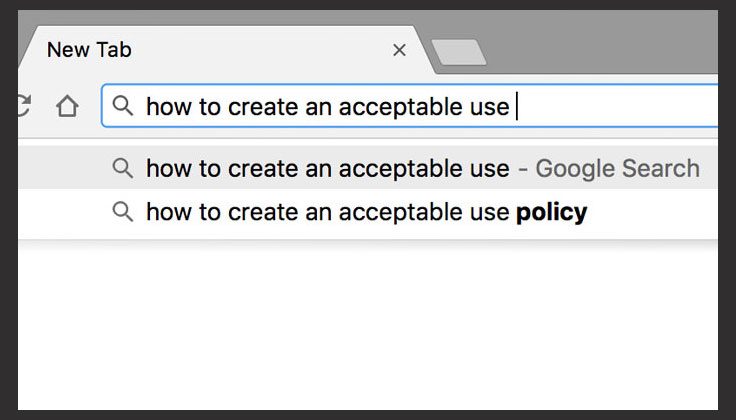So many MSP Marketers out there are producing excellent content in their blogs. But sadly, a lot of it will go unseen because the post titles are lacking.
Titles are important because whenever you add a new post or page to your website, you create a fresh opportunity for your brand to get found in search results. Organic traffic is the Holy Grail of digital marketing, of course, because a) it is driven by consumer need, and b) people trust organic listings more than sponsored links.
Optimizing your site content is important, but you should also keep your expectations in check. A recent post on Impact highlights a study that revealed a mere one-half of one percent of blog posts account for 50 percent of all monthly blog traffic. In other words, just a few of your most popular articles will drive the bulk of your traffic, not necessarily the most recent one.
{{cta(‘7811fcbe-a9d8-44c3-9eef-6348f9c491d0’)}}
This is not a reason to take your foot off the gas – organic traffic converts visitors into leads at a higher rate than any other source – but it’s important to remember the best keywords in the IT industry will not necessarily help you achieve your goals.
People will show up to your blog when you publish stuff they want to know. This is why keeping your content closely aligned with their needs is the key to success with inbound marketing.
Plan Your Blog Topics First.
Most SEO bloggers say keyword research as the first step to optimizing blog titles, but if your topic is lame, what good will keywords do? A well-optimized blog title is the result of good planning and audience research, not just keyword focus.
During this initial phase, I want you to forget about keywords for a minute and just search for clues from your customer base. We need to find out what they want to know, and then provide the best, most satisfying answers we can.
Get Ideas From Client-Facing Colleagues
One of the best ways to get ideas is by talking to customer-facing employees in your organization, including sales, customer service, and accounting. These colleagues have unique insights into the questions, challenges, goals, and trends surrounding your buyers. Ask them to start taking notes about what clients say, then meet once a month to discuss these findings.
You should also ask colleagues to look through emails they’ve sent to clients over the past several months. You can find a goldmine of blog content by mining emails that answer customer questions.

Which Posts Are Driving Traffic To Your Site?
Check your marketing analytics to see which posts are driving traffic to your website now. As mentioned earlier, the list will likely be short, but these topics are obvious indicators of what people are interested in. Some analytics apps like HubSpot will show you not only how many views your posts are getting, they also show you which ones are generating the most call-to-action (CTA) clicks. Once you’ve found your top performing articles, you can find related topics that might resonate.
High Traffic Post: “How To Keep Your Cloud Expenses From Rising”
New Topic: “When Should You Downgrade Cloud Resources & Save Money?”
Check Social Media & News Aggregators
Many marketers forget about using social media for content planning. Using keyword listening apps, you can quickly identify trending topics across the social-sphere and look for ways to add something unique to the discussion.
Content curation sites like Feedly are also great tools for keeping your finger on the pulse of what people are talking about in your industry.
Work Long Tail Keywords Into Your Titles
Now that you’ve got a healthy list of good topics, you can start working keywords into your titles.
Most searches on the Internet today are known as “long tail keywords.” These phrases, which include three words or more, are critical for blogging because of the way people search on Google today. They query detailed questions like “How do I create an acceptable use policy?”

Long tail keywords have a low search volume due to their specificity, but they also convert at a higher rate. This highlights an important principle of content marketing. A good strategy will attract the right visitors, not necessarily a ton of them. You want people who need your services, and your content should speak directly to them. Writing articles to appeal to many different buyers will depress your conversion rates and leave you frustrated.
Many of your working titles will already have keywords in them, since you are hopefully targeting the same phrases your buyers use. These should be reflected on your static website pages as well.
Shameless Plug: If you need keyword research for your website, download our guide, Keyword Research for IT Companies. It gives you step-by-step instructions on how to find productive keywords from multiple sources (not just Google Keyword Planner) and evaluate them based on overall benefit. You will also get a worksheet template for implementing these tactics.
Get the Difficulty Score
One of the most important metrics you will need when prioritizing your posts is difficulty score, and unfortunately, this is one you have to pay for.
HubSpot and Moz are a few tools that enable you to find out how difficult it is to rank for a specific keyword, based on the how many sites with a respectable domain authority have posted similar (or the same) titles. Both tools score difficulty from 0 to 100, with most ideal targets falling in the 20-40 range.
This is especially useful for websites that are still working their way up the domain authority ladder. By publishing posts that have a lower difficulty score, you will have a better chance of getting your articles seen in search engine results.
Put Your Keywords at the Beginning of the Title
Try to use your keyword phrases close to the beginning of the title whenever possible. It gives you a slight edge when optimizing your posts.
A great blog title can do a lot of things for your brand. It will make your content more compelling and easier to find for your audience. These steps should help, but it also takes a lot of persistence and experimentation. Never stop writing. Never stop testing. It will make a big difference in your traffic, and eventually, sales.
{{cta(‘0d1d6b82-6e79-470e-873b-ab17c123200f’)}}


